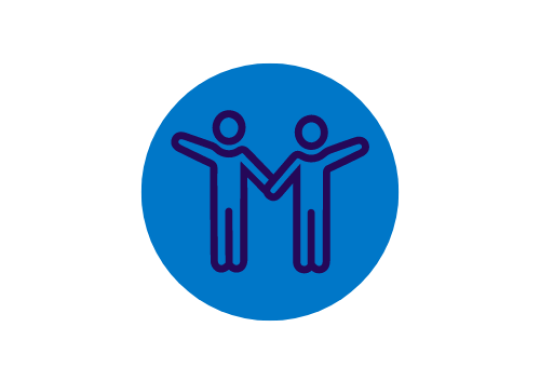6 Tips to create an inclusive gym
This guide, created with Wiltshire Centre for Independent Living gives simple advice for gyms and leisure centres to create inclusive environments for Disabled people.
It is produced by Get Yourself Active.
Contents
Making your gym more inclusive
What stops us taking part?
According to Sport England, Disabled people are twice as likely to be physically inactive (41%) than those without a disability (20%). No space is perhaps more closely aligned in your mind’s eye when you think of getting active than the gym.
Many Disabled people want to be active, be part of a group or community, and work out in gyms, but face many barriers: economic, physical and attitudinal.
We have worked with Wiltshire Centre for Independent Living to identify what stops Disabled people from getting active at the gym. Together we have created this guide to explain what gyms can do to be more accessible and inclusive for all of us.
What stops us taking part?
- Price
It is impossible to ignore that one of the biggest barriers is the income gap between Disabled and non-disabled people. The average gym membership costs more than £40 a month, with fully accessible gyms costing even more.
- Accessible Premises
There is a fundamental accessibility problem in the UK gym industry. Only 67 of Britain’s almost 7,500 gyms are accredited by the Activity Alliance’s Inclusive Fitness Initiative: less than 1 per cent of all gyms.
- No specialist equipment
Many have accessible entrances but have not considered how Disabled people will use the equipment. Many wheelchair users need gym equipment which can work without them having to leave their chairs.
Some Blind people need voice-activated equipment. People with Learning Disabilities may need extra time with a coach to learn how to use the kit.
- Lack of training
Negative attitudes are also a big barrier. Gyms can be intimidating, but they become off-putting if you add negative attitudes towards disability. Many gym staff lack confidence in supporting a Disabled person to use a particular machine or to adapt physical activity.
There is a lot of training available, which should become a core skill for – at the very least – some of the staff working on any shift.
What can you do?
Ultimately, the industry must stop treating Disabled people as an afterthought. Every gym should make an effort to work with their local Disabled community. You can do this by reaching out to Disabled People’s Organisations (DPOs) or individuals with lived experience of disability. This will help you make the changes we need rather than those you think we want.
Making your gym more inclusive
You can make your gym more inclusive by:
- Training staff to become disability confident
Make sure your staff have good awareness and understanding of the lives of Disabled people and how different impairments affect people differently. This is especially important for members of the team that do inductions and activities such as PT sessions.
- Hire Disabled people
Actively employing Disabled people in your staff teams is really important. Their lived experience will allow them to offer insight into your policy and processes to remove barriers.
- Having a variety of gym equipment
Consider equipment such as exercise balls, resistance bands, wobble cushions, light dumbbells, hand bikes, and adaptable machines. Have some adjustable equipment too that you can use from a wheelchair. The key is to ensure you have a variety of them available.
- Ventilation
Keep your rooms well ventilated, especially pools. Ensure the water is warm but the room doesn’t have high humidity. Some Disabled people may have impairments which limit their ability to regulate their body temperature, so you need to ensure that both the water and the room are of a pleasant temperature.
- Accessible changing
Create accessible changing areas with a toilet, changing bench and shower all in one room. If you can, consider creating a ‘changing places’ facility.
- Tidy spaces
Allow safe and easy access for people with mobility aids and visual impairments – and indeed everyone – by keeping gym floors tidy. Ensure equipment is placed in the correct areas (e.g. weights returned in weight order) to allow those with a visual impairment to find the right equipment easily.


